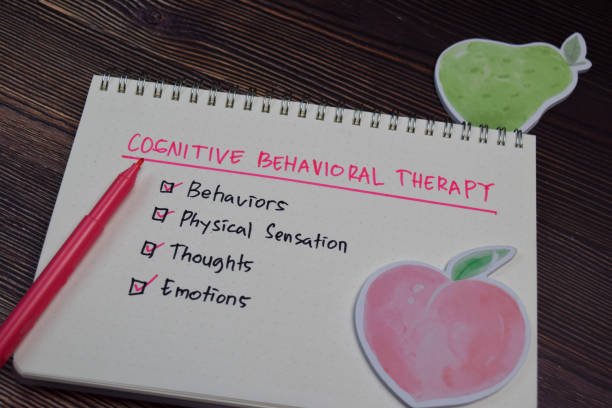
What is Cognitive Behavioral Therapy? Change Habitual Thinking Quickly and Effectively
Cognitive Behavioral Therapy (CBT) is a form of psychotherapy. Not only is this therapy supported by many expert studies, but its actual application effects are also quite remarkable. It is most commonly used to treat eating disorders, depression or anxiety. Suffering patients. Some doctors will suggest that for mild or moderate depression, cognitive behavioral therapy can be performed first, which may be more effective than taking antidepressant drugs. We will introduce cognitive behavioral therapy in detail below and compare it with traditional psychotherapy.
Cognitive behavioral therapy is fast and effective
Traditional psychotherapy mostly uses Freud’s psychoanalytic method to find out the root causes of psychological problems step by step. Therefore, examining and reviewing the past is a major focus. However, this method requires repeated interviews over a long period of time, and the process is not only It is time-consuming and expensive.
Although patients may eventually be able to remove their psychological defenses, become aware of their feelings, and reach a state of awareness, the problem itself may not necessarily be solved because the underlying emotional factors may still exist.
On the contrary, cognitive behavioral therapy focuses less on reviewing the past and more on the present, and by influencing the patient’s thoughts, it changes the originally inappropriate behavior that they want to eradicate. This method is short-term in treatment and is difficult to apply. The wide scope also makes cognitive behavioral therapy a very important psychological treatment method in modern times.

Three core concepts of cognitive behavioral therapy
According to the American Psychological Association (APA), the core concepts of cognitive behavioral therapy are the following three:
- Psychological problems may arise from wrong or negative thinking, which is the so-called cognitive distortion.
- The reason why patients develop psychological problems may come from negative behavioral patterns learned in the past.
- People suffering from mental illness can learn better ways to cope, thereby alleviating their symptoms and getting their lives back on track.
According to the theory of cognitive behavioral therapy, any troubles or problems are actually the meaning given to an event by people themselves. Therefore, although what has happened cannot be changed, our cognition and thoughts about the matter can still be changed. changed. However, our understanding of things is easily affected by inertial thinking patterns, which is like looking at the world through colored glasses.
Therefore, the goal of behavioral cognitive therapy is to make people aware of the colored glasses they wear, thereby improving cognitive distortions and changing their thinking patterns.
Common cognitive behavioral therapy practices
Cognitive behavioral therapy hopes to teach patients that although people cannot control everything around them, they can control their thoughts and help people cope with various situations by changing the way they interpret things. For example, a person with low self-confidence may be quite insecure about his or her appearance or abilities, and may even have negative thoughts, gradually form a negative thinking pattern, and begin to avoid opportunities for social contact such as work or school.
Under normal circumstances, the psychologist will first do a functional analysis, asking the patient to find out the key points that cause him to lack self-confidence and analyze them. However, this step is actually not easy for the patient. Once the patient begins to become self-aware of this belief, the therapist can begin to focus on the behavior or belief to be changed and teach the patient application techniques, such as: drug addiction People, therapists do not directly order patients to quit, but use some techniques to simulate their own drug addiction and avoid or prevent it.
Cognitive behavioral therapy applications
More than 50 years ago, psychiatrists began to use cognitive behavioral therapy to treat depression. However, cognitive behavioral therapy can be used in a wide range of fields, from mental illness to reducing life stress and facing complex and difficult interpersonal relationships. , getting over pain and other difficulties in life can all be dealt with.
Common diseases or symptoms for which CBT can be applied include: panic disorder, post-traumatic stress disorder (PTSD), generalized anxiety disorder, insomnia (Insomnia), various phobias, childhood depression, substance addiction (drugs), and borderline personality Borderline Personality Disorder (BPD), eating disorders and other mental illnesses, and even marital quarrels or general emotional problems can all be improved through cognitive behavioral therapy to avoid more serious problems caused by stress.

4 Types of Cognitive Behavioral Therapy
According to the British Cognitive Behavioral Therapy Association, the basis of cognitive behavioral therapy is established through models of individual emotions and behaviors. The treatment methods are quite diverse and even allow patients to self-treat. The following introduces 4 common types of cognitive behavioral therapy:
- Rational emotive behavioral therapy: The goal of this approach is to identify and change the patient’s irrational beliefs. By constantly challenging these beliefs, the patient will eventually discover his or her own problems and then change his or her beliefs.
- Cognitive therapy: focuses on identifying and changing incorrect or distorted thinking patterns, emotional responses, or behaviors.
- Multimodal therapy: This model is a comprehensive treatment that takes into account that different individuals may face different situations, and explains and treats personality at 7 levels. These 7 levels are: Behavior, Affective Processes, Sensation, Images, Cognition, Interpersonal Relationships and Drug/Biological Function, referred to as BASIC I.D.
- Dialectical behavioral therapy: This type of cognitive behavioral therapy can mainly deal with people’s thinking patterns, and combines the concepts of emotional control and mindfulness meditation (living in the present) to help patients solve psychological problems. It can mainly be used in suicide prevention or treatment of borderline disorders. Enter the Personality Patient.












